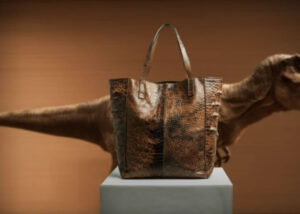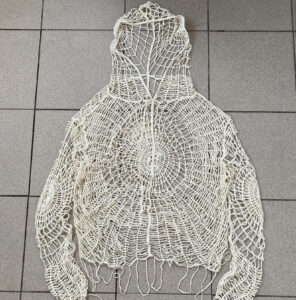Jazz is a genre born from rebellion, resilience, and relentless reinvention. It grew from the margins—social, racial, economic—into a sound that transcends them. And yet, despite its inherently inclusive roots, jazz has long mirrored the systemic imbalances it once sought to defy.
In the UK, the jazz revival of the last decade has breathed new energy into a music scene often considered niche. Scenes in London, Manchester, Glasgow, Leeds, and beyond have reimagined the sound for younger, broader, and more diverse audiences. From cozy basement clubs to boundary-breaking festivals, UK jazz today is less about tradition and more about transformation. But one thing has remained stubbornly consistent: women are still underrepresented.
According to research conducted by Women in Jazz, a pioneering UK-based organization committed to empowering and amplifying women in the genre, 55.8% of women in jazz feel poorly or very poorly represented. This is not just a statistic—it’s a quiet indictment of an industry still catching up to its own progressive image.
That’s why The Year of Women in Jazz matters. Launched as a year-long campaign to recalibrate attention and access, it’s more than a celebration—it’s a declaration. And it’s already reshaping the conversation.
Not Just Participation, But Power
The campaign is the brainchild of Louise Paley and Nina Fine, co-founders of Women in Jazz. Together, they’ve built a platform that doesn’t just feature women—it centers them. With a program spanning newly released singles, live performances, educational talks, mentorships, and artist profiles, The Year of Women in Jazz sets out to build visibility while actively dismantling the barriers that keep female and non-binary artists from thriving in the industry.
At the heart of the campaign is a simple but profound gesture: a new single released each month from a rising or established female jazz artist. The series launched with a deeply emotive cut, “At Home,” by trumpeter Lily Carassik, whose blend of sensitivity and technique offers a powerful opening note for the year.
But these aren’t just tracks—they’re statements. Each single is a showcase of unique voice and vision, weaving together sonic threads from traditional swing, neo-soul, afrobeat, modal jazz, and electronic experimentation. In doing so, they collectively challenge the idea of a single, monolithic “woman in jazz” identity and instead present a plural, ever-expanding chorus of perspectives.
The Landscape: Progress and Pressure
The campaign arrives at a moment when UK jazz is experiencing both a renaissance and a reckoning. On the one hand, the scene is more vibrant, visible, and innovative than it’s been in decades. On the other, it still reflects long-standing patterns of exclusion, especially in gatekeeping roles—booking agents, label heads, radio curators, and critics.
Festivals like We Out Here, Manchester Jazz Festival, and EFG London Jazz Festival have increasingly championed gender diversity in their lineups, but systemic challenges remain. Many female artists report fewer opportunities to headline, lower pay, less media attention, and subtle forms of dismissal or tokenization.
“I’ve been on bills where I’m the only woman, again and again,” says saxophonist and composer Maddie Herbert, one of the artists featured in the campaign. “It’s not always overt discrimination. It’s just this chronic sense of being out of place, of having to constantly justify your presence.”
In this context, The Year of Women in Jazz functions not just as celebration, but course correction. It signals to the industry and the audience alike: we are not guests here. We’re part of the architecture.
Building a Mentorship Network
A cornerstone of the campaign is education and mentorship—not in the top-down sense, but as a collective investment in future generations. Through artist-led sessions, masterclasses, and one-on-one mentoring, the initiative offers emerging talents a route into the notoriously insular world of jazz.
One such mentee is Zaria Hussain, a young drummer and composer from Birmingham, who describes the impact of mentorship as “life-changing.”
“Jazz isn’t always accessible,” she says. “There’s a mythos around it—like you have to already be in the know to even start. Having someone who looks like me, who’s walked the same road, say ‘you belong here’—that’s radical.”
And that’s the ethos behind Women in Jazz. It’s not about elevating a few stars for symbolic representation. It’s about creating infrastructure, about turning what was once a gate into a bridge.
Rewriting the Narrative Through Media
Beyond the music, The Year of Women in Jazz is also a storytelling project. Through podcasts, video content, written profiles, and social media spotlights, the initiative is ensuring that women’s contributions to jazz are documented—not just performed.
“Representation isn’t just about who’s on stage,” says co-founder Nina Fine. “It’s about who writes the histories, who gets interviewed, who appears in the archival footage. If women aren’t visible in those places, we risk being erased again.”
To that end, the campaign is partnering with independent media platforms, universities, and archives to preserve the work being done in real time. This isn’t just performance—it’s permanence.
The Sound of Resistance
One of the most thrilling elements of the campaign is the sheer range of musical voices it brings forward. From avant-garde instrumentalists to genre-bending vocalists, these are artists for whom jazz is not a rigid form but a malleable language.
Take Immy Churchill, whose blend of folk-inflected melodies and jazz phrasing defies easy categorization. Or Camilla George, whose saxophone-led compositions draw on West African rhythms as much as bebop tradition. Or Nardeydey, whose hybrid approach to jazz-pop-dance refuses genre gatekeeping altogether.
These are not “female jazz artists” in a marginal sense. They are the future of jazz, full stop.
More Than a Moment
It’s tempting to frame The Year of Women in Jazz as a high point—an overdue platform that’s finally giving artists their due. But its founders and participants are adamant that this must be the beginning, not the apex.
“We’re not interested in tokenism or trend-chasing,” says Louise Paley. “The goal is not to have one great year. It’s to build momentum and mechanisms so this becomes the norm.”
Already, the ripple effects are being felt. Venues are reaching out to diversify their booking practices. Labels are looking to expand their rosters. Educational institutions are reexamining how they support gender-diverse talent. Change is happening—not overnight, but undeniably.
Reclaiming Jazz’s Roots
Perhaps what makes this movement so urgent and resonant is that it’s not asking jazz to be something new—it’s asking it to return to its roots. Jazz has always been a form of resistance, of reclamation, of creating space where there was none.
For women, especially Black and queer women, this has often meant performing in a space that didn’t fully see them. From Mary Lou Williams to Alice Coltrane, from Nina Simone to Esperanza Spalding, women have long shaped the sound of jazz—yet have too often been footnotes in its narrative.
The Year of Women in Jazz refuses that erasure. It puts names to faces, sounds to stories. It celebrates not just what these artists make, but how they’ve made space for each other—through community, collaboration, and courage.
The Hustle
Jazz has always thrived on tension—between structure and freedom, tradition and innovation, individual voice and collective harmony. What The Year of Women in Jazz reveals is how that tension plays out off-stage as well.
The campaign is both celebration and confrontation. It calls out the disparities while building the remedies. It doesn’t just imagine a better jazz scene—it’s making one, month by month, beat by beat.
And as each new single drops, as each mentorship takes root, as each story is told, a different kind of harmony emerges. One in which women are not just featured—they’re foundational.
Jazz in the UK isn’t just surviving—it’s evolving. And with The Year of Women in Jazz, it’s evolving toward something bolder, broader, and far more just.
No comments yet.








